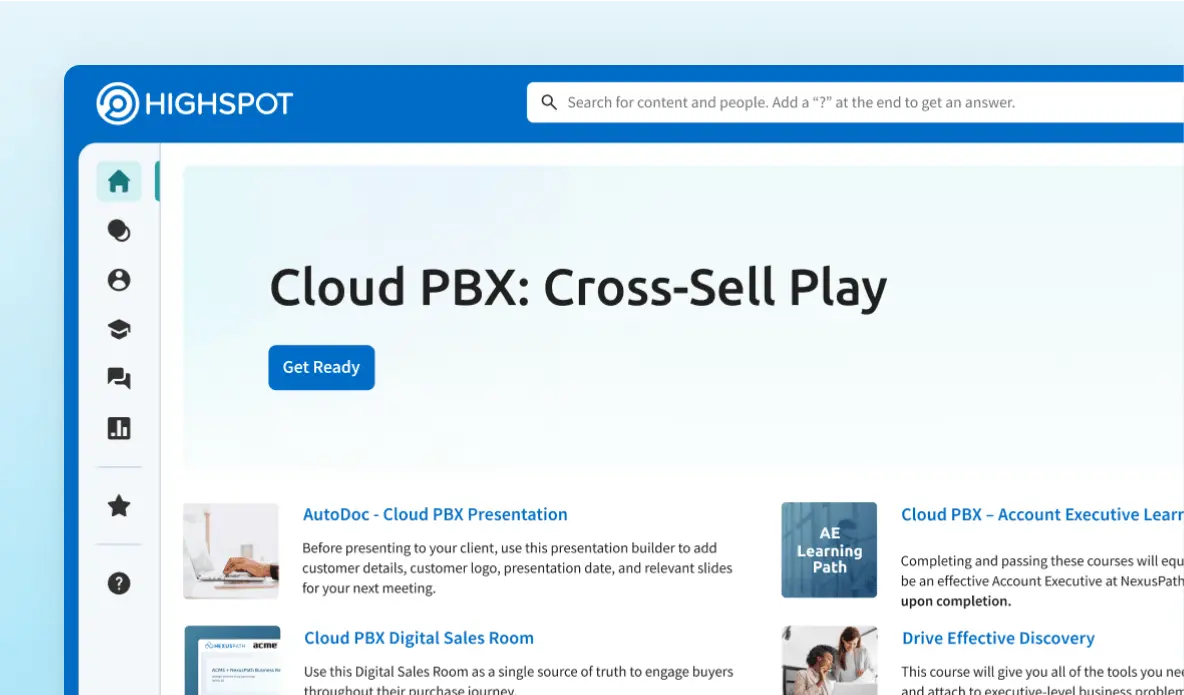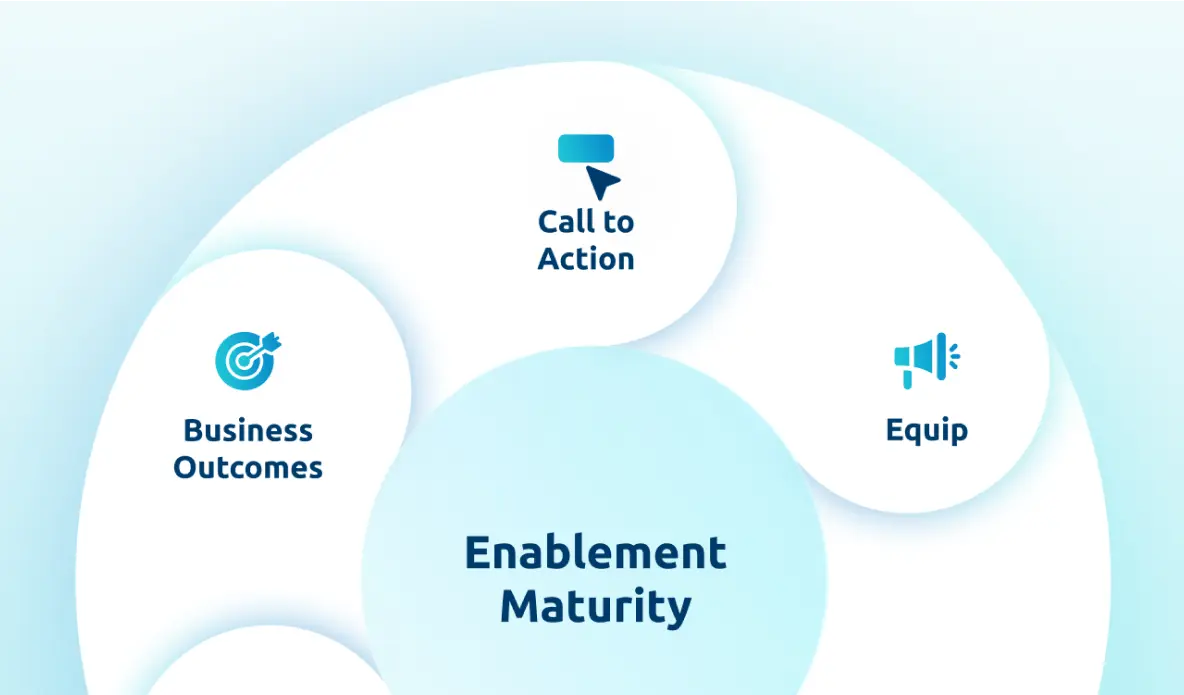Hexagon’s product marketing leader shares the positive impact digital sales rooms have had on his team’s prospecting efforts.
According to research from Forrester, 74% of buyers choose the sales rep who was first to add value and insight. So, how can you deliver a standout experience to win over modern buyers?
Shawnna Sumaoang: Hi, and welcome to the Win-Win podcast. I’m your host, Shawnna Sumaoang. Join us as we dive into changing trends in the workplace and how to navigate them successfully.
Here to discuss this topic is Jose Sanchez, the product marketing manager at Hexagon. Thanks for joining us. I would love for you to tell us about yourself, your background, and your role.
Jose Sanchez: Yes, of course. Thank you so much for having me. This is really great and perfect timing because I’ve been using it even this week.
We were at a trade show, so I’ve been using the platform. It’s been great. My background is technical. I did geological engineering. So I was in mining. I was in a consulting firm and then eventually got to be, uh, an engineer for Hexagon, but I always had a little bit of a creative background, creative things happening, floating around.
So it did drive me back to want to be more creative, and so a marketing position opened in Hexagon in our division and I went for it and I got it. So it’s been four years now that I’ve been doing product marketing and I think that’s been a really good way to sort of move through different parts of our company.
SS: Amazing. Thank you for kind of taking us through that. I’d actually love to double click on that, because you’ve been with Hexagon for almost two decades and you started in that technical role and have transitioned into product marketing. Can you walk us through that journey and how has your background influenced your approach to your go-to-market strategy?
JS: Oh yeah, for sure. I think I’m blessed in being able to understand parts of the technical side that maybe the rest of the marketing team doesn’t, and they lean on me quite a lot on that. So yeah, I think that journey and that background made it so that my current role, which is really talking to the product development team, and coming up with go to market strategies and then imparting that information to the rest of the marketing team, the designers, and the videographers, everybody, so that we can get that message out properly. So I think that my background has really influenced the way I do go to market strategies because of the technical side of things.
SS: Amazing. And as a product marketer, what are some of the biggest challenges that you’re seeing when it comes to engaging modern buyers throughout the journey and how are you overcoming some of these challenges?
JS: That’s a good question. I think the biggest challenge for us in this industry, and it’s probably not unique to our industry, but our sales cycles are really long. There’s relationships that have to get built, sometimes it can take years. And so it requires a lot of listening to our sales people, listening to them to know what they’re using, what’s useful for them and what’s not. So that’s been a huge challenge because sometimes a marketing team can just go off and say, hey, we’re gonna create brochures.
We’re gonna create this and this. And not really know whether they’re using it or not. Highspot has been instrumental in that because we were noticing those numbers weren’t looking good. They weren’t sharing things out, they weren’t pitching out, and so we just started having way more conversations with them and that overcame that challenge.
We’re in a much better place now where we know what they need. We know what they like and what they don’t like. To build those relationships to be able to sell things.
SS: Amazing. And in your opinion, what unique value does an enablement platform offer when it comes to creating and delivering impactful buying experiences?
JS: I think it, it goes very much hand in hand with the, the answer for the last question. Having a place where everybody, not just the marketing team, but the sales team and even the product developers can go to and see what’s out there, see what’s being said about their products and how it’s being presented, and then being able to give feedback.
That’s incalculable, how amazing that is. Because, you know, before it was SharePoint, it was a folder, or in teams, there’s just channels and you just stick files in there. Nobody has any idea. Whether it’s the newest or the best, or whether it’s good or not. So I think that’s really been an amazing thing for us to be able to use, that it’s not just a repository, I don’t wanna call it a repository, but a place where they can go, a hub, where they can see the latest and know that it’s been qualified and feedback has been given on it.
SS: Amazing. And you are actually using Highspot to create some really impressive and interactive experiences, including leveraging digital rooms for trade shows and customer stories. Can you share more about these initiatives?
JS: Yeah, no, this is one of the great things that I’ve really enjoyed about working with Highspot is our account managers and we have a biweekly meeting.
It’s just a short little meeting where they, we have questions for them, they update us on things. And those meetings have been amazing at finding out, ’cause Highspot is so robust, there’s so much that we. Can use and we don’t even know. So having those conversations, that’s how it came out. We started saying, Hey, we have this huge trade show.
We wanna have something interactive on the floor where we can tell stories about how our customers are using our technology. And they suggested digital rooms and they showed it to us. This is, I think still when it had just come out and I thought that sounded perfect. It was an easy interface that was on a touch screen on our floor.
Salespeople could walk. Customers over and show them, hey, you’re an underground, minor. Look at this case study. And a video would come up and really, really nice way to interact and then shareable. So that was really just drove it home. You know, you can talk to them, show them and they say, you know, I’m gonna send you this.
Here’s your email. And it would go, and it was tracked. So those digital rooms have become something that we’re now using at every trade show. We just used it now in Montreal for one of the big trade shows we were in. And it’s funny because it also opened the door for just. Other Highspot things as well.
A lot of, I saw uh, during the week that salespeople were just opening up Highspot on the tablet so they could show them anything. It didn’t just have to be the digital room. They were actually pitching live as if they were on a call or something, but just there on the floor and it was great. It was great to see that.
SS: Amazing. What are some of your best practices for creating effective Digital Rooms for your teams to leverage?
JS: That theme that I’ve been talking about, about listening to our sales teams is really important for that. They’re the ones that drove what we were telling on that Digital Room, that specific one, and then new ones have come up.
So listening to the salespeople and the regional field marketers, we’ve realized, oh. They go to trade shows that are just about underground mining, for example, or just about blasting. And so if we can create a digital room or even teach them to create their own Digital Rooms, that idea has sparked many, many more people wanting to make their own.
So we’ve already started making little offshoots of that first one with different flavors. So yeah, that would be my advice. Listen to your salespeople and they could drive exactly the way you need to make things.
SS: And speaking about that in rolling out Digital Rooms to your team, I believe you started with your BDR team and are now expanding your focus to your account management team. How are you driving adoption across these teams?
JS: Adoption for us has been a challenge from the very beginning. We’re learning at the very beginning what could be done, what couldn’t be done. So we decided to get a little bit more exact with the way we were using Highspot, and that’s what spawned all the, all the new collateral that we’ve created and stored there for them to pitch as well as the Digital Rooms.
And so I think starting with our business development managers was just a really obvious way to address something that was needed right away. You know, this is our new business. They’re going out there and trying to grab as many new audiences or even existing customers, but for new technology. So starting with them was great.
It was maybe, if you will, a bit more aggressive. A lot of the collateral that we needed, like those Digital Rooms or for right now, we need these conversations to happen. We have now started talking to our account managers as well. We just had a conference of all account managers getting together, I mean our headquarters in Tucson, Arizona, from around the world.
And we did started doing the same thing, listening to what they need and what is effective, what’s not for them to communicate with existing customers. So I think that transition and that adoption for the new team, the account managers, as soon as they start also working with their regional business development managers, they realize, oh, okay, I can use this.
And then they can take it and use this part. So it’s all connected and I think that adoption’s great. And to be honest, every time I’ve had any sort of enablement where I’m showing. The capabilities of Digital Rooms or Highspot with my team. Just showing them the immediate tracking. You know, that somebody opens the pitch you just sent and you get on your phone, you get a ding, and they love that.
As soon as they see that, they’re like, oh my god, that’s amazing. So that I think has also really upped the adoption is people getting excited about it.
SS: Amazing. And I love how some of that’s even happening organically now. What impact have you seen so far from leveraging digital rooms to engage your buyers across their journey? And are there any key wins or notable business outcomes you can share?
JS: Yes, definitely. Our marketing team has always relied on what we get as feedback from our salespeople, and especially now, that’s the sort of new strategy we’re taking. So the number of pitches is for us right now, gold is what we look at.
If that number starts dropping, we have to see why is that piece not being used? We’re not being pitched, so we’re constantly monitoring. What’s happening as well as just getting verbal feedback or emails. We encourage everyone to give us feedback on pieces. So yeah, I think, uh, the numbers have gone up.
The number of pitches have gone up. These digital rooms are going out at every trade show. We made a Spanish version as well that was asked by our LATAM team and I think it’s very obvious when you look at. Before Digital Rooms. We started using it for our big trade show, my expo last September.
Before that, the numbers dramatically increased afterwards, so that’s the way we’ve been able to measure that.
SS: Amazing. Now, we talked about this at the onset, but with your strong technical background, how do you leverage data and insights to inform and improve the programs that you’re leading?
JS: That’s a really good question, especially for our technology and our, our group of suites that we sell specifically because we always talk about data and we always talk about the power of data, being able to help you decide things, making decisions, making changes in your strategy.
And so I think for us, talking to our account manager from Highspot, we realized that we can get these reports and it gives us such great insights down to the granular, you know, who’s using what. And that to us is amazing. In our solutions, we do the same thing. We tell our clients that all this data that’s being produced, trucks moving, people driving.
Safety operations and planning, everything comes together in a mine and produces data. And if you can grab that data and actually make sense of it and start making decisions based off of it, it’s the best. And we’ve started doing that now with Highspot. We’ve been able to say, this strategy’s not working, let’s move on.
Or let’s change it and make it work this way. Or, wow, that one’s really working, we’ve gotta do more of that. So yes, definitely the engineering side of me loves seeing graphs and loves seeing charts that, and not necessarily that always say good things. It’s. Really great when they don’t tell you good things because that’s how you learn. And I think Highspot has that for sure.
SS: I love that. Last question for you, Jose. For other product marketing leaders that are looking to improve buyer engagement, especially in this what’s becoming a very digital first world, what is the biggest piece of advice you could give them?
JS: Yeah, I think I’ve already mentioned it a couple of times. You probably noticed the theme, but, listening, listening to the people who are using this collateral, who are using these digital rooms or whatever you have in Highspot. And it goes beyond Highspot, of course. It’s your website, anything that you’re creating, videos that you’re posting up on YouTube or wherever you’re doing it, hearing what is effective and what’s not, from the boots on the ground, if you will.
They’re the ones who really are gonna be using this stuff. And if they’re not really into it, then you’re not gonna be successful. So that’s my number one piece of advice is listen to them, have conversations with them one-on-one. It really helps.
SS: Amazing. Well, Jose, thank you again so much for joining us. I really appreciate it.
JS: Of course. Thank you so much for having me.
SS: To our audience, thank you for listening to this episode of the Win-Win podcast. Be sure to tune in next time for more insights on how you can maximize enablement success with Highspot.




